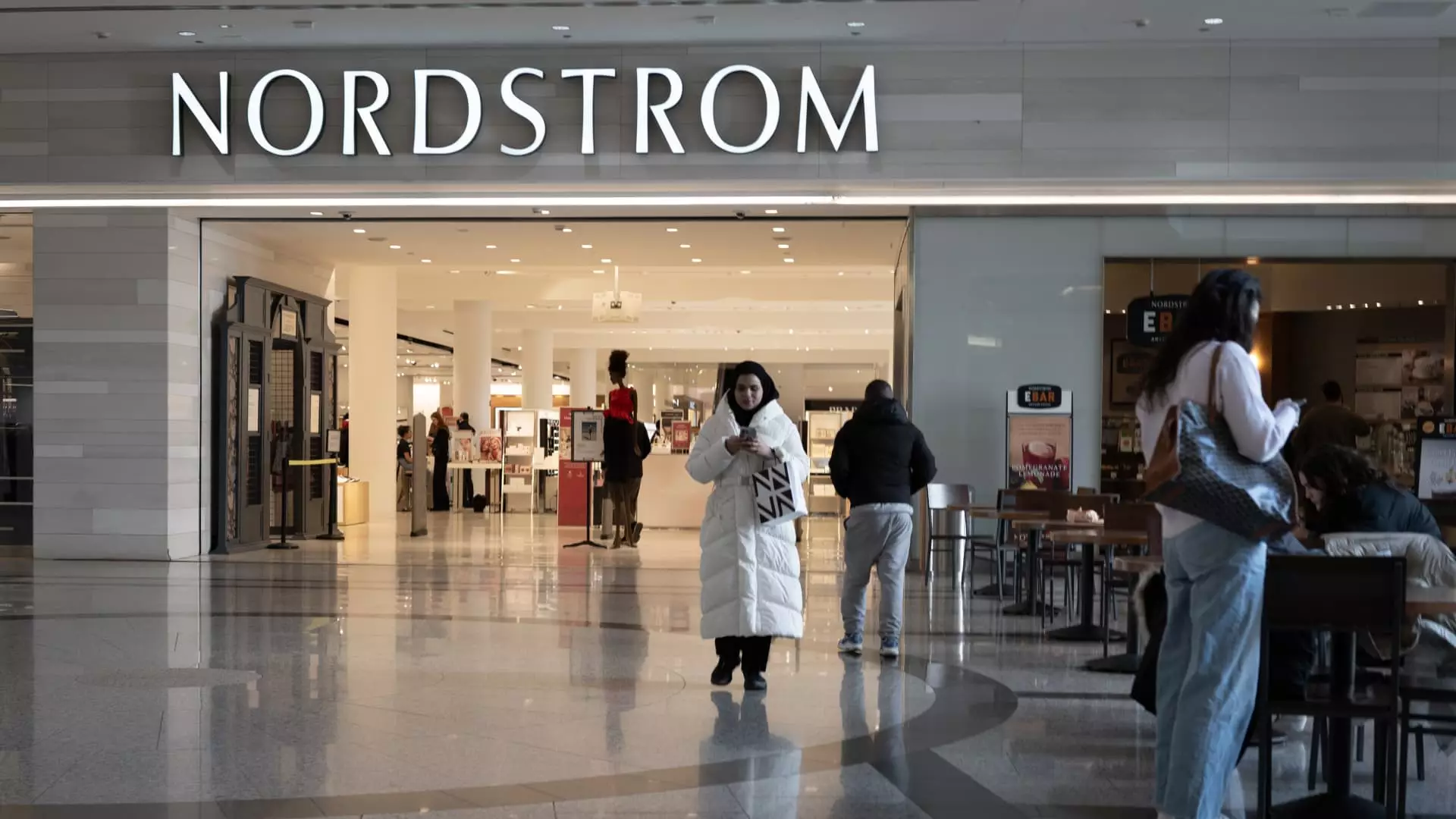Nordstrom recently reported quarterly sales that exceeded Wall Street’s expectations, with revenues growing approximately 4% year-over-year. This growth can largely be attributed to increased consumer spending on clothing, shoes, and activewear across both its namesake department stores and the off-price Nordstrom Rack chain. Despite this optimistic surface, the Seattle-based retailer remains cautious about its full-year sales forecast as it heads into the crucial holiday shopping season. The company anticipates revenues for the year to be relatively flat, up to a 1% increase, a notable revision from an earlier outlook that warned of a potential drop.
Erik Nordstrom, the company’s CEO, emphasized the impact of strategic initiatives aimed at appealing to discerning shoppers. Notably, women’s apparel and activewear experienced robust growth, reflecting a double-digit increase year-over-year, while sales in men’s apparel and children’s products also made significant gains. Such trends suggest that Nordstrom is successfully resonating with consumers, who are increasingly selective about their purchases in a challenging economic climate.
However, this growth comes with caveats. Erik Nordstrom acknowledged a downturn in sales trends towards the end of October, which tempered the company’s holiday expectations. This mixed signal raises questions about the sustainability of growth in a market where consumers are showing signs of restraint in their spending, particularly on non-essential items.
When reviewing financial performances, Nordstrom recorded a net income of $46 million for the third fiscal quarter, which translates to 27 cents per share. In contrast, the previous year’s quarterly performance yielded a net income of $67 million, or 41 cents per share. Although revenue increased from $3.32 billion a year ago to $3.46 billion this quarter, it is vital to recognize the broader retail landscape where many businesses are grappling with varying degrees of consumer purchasing anxiety.
A striking fact is that comparable sales across Nordstrom’s two brands grew by 4%, surpassing analysts’ expectations of a mere 0.7% increase. This performance is particularly commendable given the context of a global retail environment marked by cautious consumer behavior and economic uncertainty.
Strategic Adaptations During Challenging Times
Nordstrom’s approach to mitigating the pressures faced by discretionary retail spending has included a strong emphasis on its off-price chain, Nordstrom Rack. The third-quarter reports indicated that while both retail environments achieved similar growth percentages—4% for the namesake brand and 3.9% for Nordstrom Rack—efforts to navigate changing customer preferences are clearly yielding positive results.
However, retail is not without its obstacles. A recent calendar shift adversely impacted the timing of Nordstrom’s popular Anniversary Sale, with only one day of the event falling in the third quarter this year compared to eight days in the same period last year. The repercussions of this timing shift resulted in a negative influence on net sales, highlighting the fragility of retail dynamics.
Additionally, the performance of other retail giants reflects similar hurdles, with Macy’s reporting a drop in third-quarter sales. This suggests that Nordstrom’s relatively positive results stand out within a frame of broader retail struggles, reinforcing that while gains are noteworthy, they are part of a complex and competitive landscape.
In the face of evolving retail environments, digital sales have emerged as a critical growth area for Nordstrom, showing an annual increase of 6.4%, further positioning e-commerce as a vital component of overall sales—accounting for roughly one-third of total revenue. The retailer’s investment in enhancing its online presence through improved search features and greater product accessibility for under $100 offers evidence of a strategic pivot towards meeting contemporary consumer preferences.
Nordstrom’s efforts to develop avenues like buy-online-pickup-in-store services at Nordstrom Rack have likely contributed to greater customer engagement, providing shoppers with convenience that modern consumers have come to expect. The increased inclusion of third-party sellers has also diversified product offerings, appealing to a wide audience and increasing online transactions.
As Nordstrom enters the holiday season, the retailer’s balance between optimism and conservatism is palpable. While quarterly results reflect a commitment to understanding and catering to customer preferences, the informed caution about full-year sales forecasts signifies a prudent approach in an unpredictable economic environment. Retailers must remain agile, and Nordstrom is working diligently to sustain its positive momentum amidst changing consumer sentiment and competitive pressures. The coming months will be crucial for Nordstrom as it strives to meet its strategic goals while navigating the complex landscape of contemporary retailing.


Leave a Reply